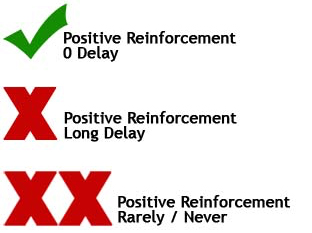DR's BLOG
The Deep Fear of Not Being Good Enough
 There are experts who propose that our two greatest fears are 1) Not being good enough and 2) Not being loved.
There are experts who propose that our two greatest fears are 1) Not being good enough and 2) Not being loved.
Really those fears are one and the same because what we’re really afraid of is that if we’re not good enough, competent enough, smart enough, “fill in the blank” enough, then we won’t be loved.
Think about this…
We are humans (big surprise right?) and as infants we depend on love, attention, and care for our physical survival. Therefore, somewhere deep in our psyche is a fear that if we aren’t loved, we could die — overly dramatic? Maybe, but haven’t you ever noticed that the intensity of some of your fears frequently are just not supported by the reality of the situation? The girl just walks away when you ask her out, or someone doesn’t agree with your opinion, or someone simply says “no” to you when you ask for a favor, a sale, etc. —so freakin’ what? But how many of us avoid experiencing what we perceive as rejection at all costs? It just doesn’t make sense! Oh yeah, it...
The Magic Ratio
 According to the Nobel Prize-winning scientist Daniel Kahneman, each day we experience approximately 20,000 moments — a moment being defined as the few seconds it takes our brain to process / record an experience. We may record the moment as positive, negative or neutral however, we tend to primarily remember the positive or negative moments. How we remember these moments dramatically affects the quality of our days, weeks, years and ultimately our life.
According to the Nobel Prize-winning scientist Daniel Kahneman, each day we experience approximately 20,000 moments — a moment being defined as the few seconds it takes our brain to process / record an experience. We may record the moment as positive, negative or neutral however, we tend to primarily remember the positive or negative moments. How we remember these moments dramatically affects the quality of our days, weeks, years and ultimately our life.
According to a decade of scientific study, the ratio of positive-to-negative interactions / experiences / moments we experience can be used to predict—with remarkable accuracy—everything from workplace performance to divorce. This work, which began with noted psychologist John Gottman’s exploration of positive-to-negative ratios in marriages. Using a 5:1 ratio, which Gottman dubbed ‘the magic ratio,’ he and his colleague predicted whether 700 newlywed couples would stay together or divorce by measuring their positive and negative int...
Is Fear Blocking You from Your Strengths?
 We all have natural strengths and talents and when we spend the lion’s share of our time and energy engaged in activities that bring out those strengths and talents, most of us will be much more successful and certainly more fulfilled.
We all have natural strengths and talents and when we spend the lion’s share of our time and energy engaged in activities that bring out those strengths and talents, most of us will be much more successful and certainly more fulfilled.
But are you letting fear block you from your strengths?
You may not even realize it. In my coaching practice, I’m working with clients every day to go after and attain what they truly desire in their life. Sometimes repeated efforts without results is simply a matter of needing a better strategy but that’s rare.
Two of the most common reasons for not attaining what you truly desire are:
1) Going after goals that are not aligned with your strengths and/or
2) Allowing fear to block you from a relentless pursuit of your goals.
So how do you handle both of these. For #1 — Take the 21-Days to Supercharge Your Strengths Course to help you align your natural talents and strengths with your goals.
Now how to overcome fear…
One of my favorite techniques ...
How would YOU go about winning the GOLD?
 From the time I began in the field of personal development, I’ve heard about the importance of modeling others as a way of speeding up the process of creating success. Find out what others who have succeeded thought, what actions they took, what strategies they used — do the same and you’ll get the same results. Great!
From the time I began in the field of personal development, I’ve heard about the importance of modeling others as a way of speeding up the process of creating success. Find out what others who have succeeded thought, what actions they took, what strategies they used — do the same and you’ll get the same results. Great!
And modeling does work — at least a good portion of the time. However, there is an important caveat.
Model people who are similar to you who have created the success you desire.
Sage Kotsenburg just won the first gold of the 2014 Winter Olympics and when he stood at the top of the course at Rosa Khutor Extreme Park on Saturday, he was not sure which tricks he would attempt.
The one that mattered was one he had never attempted. “I just kind of make things up,” he said.
Think of how different this is from other competitors who have spent all winter perfecting runs that they imagined for months.
Which strategy is better for you? For some of you, this “I just make thi...
Now, Later, Never — When to Use Positive Reinforcement
 Positive reinforcement can be very effective way to be a Strengths Hero for yourself or someone else — whether that means a simple pat on the back or using some other type of positive reinforcement. Positive reinforcement is widely accepted as a powerful method of teaching, training and building positive habits and behaviors and growing talents into strengths.
Positive reinforcement can be very effective way to be a Strengths Hero for yourself or someone else — whether that means a simple pat on the back or using some other type of positive reinforcement. Positive reinforcement is widely accepted as a powerful method of teaching, training and building positive habits and behaviors and growing talents into strengths.
But WHEN should you give it to yourself or someone else?
Utah State University published a behavioral guidelines checklist which confirms that positive reinforcement is most effective when it occurs immediately after the behavior. The guidelines also recommend the reinforcement should be presented enthusiastically and should occur frequently.
The shorter the amount of time between any talent or behavior you want to reinforce and the subsequent positive reinforcement, the stronger the connection will be in the brain — remember the brain tells us to move TOWARD pleasure and AWAY from pain.
Delay of positive reinforcement…
If...

